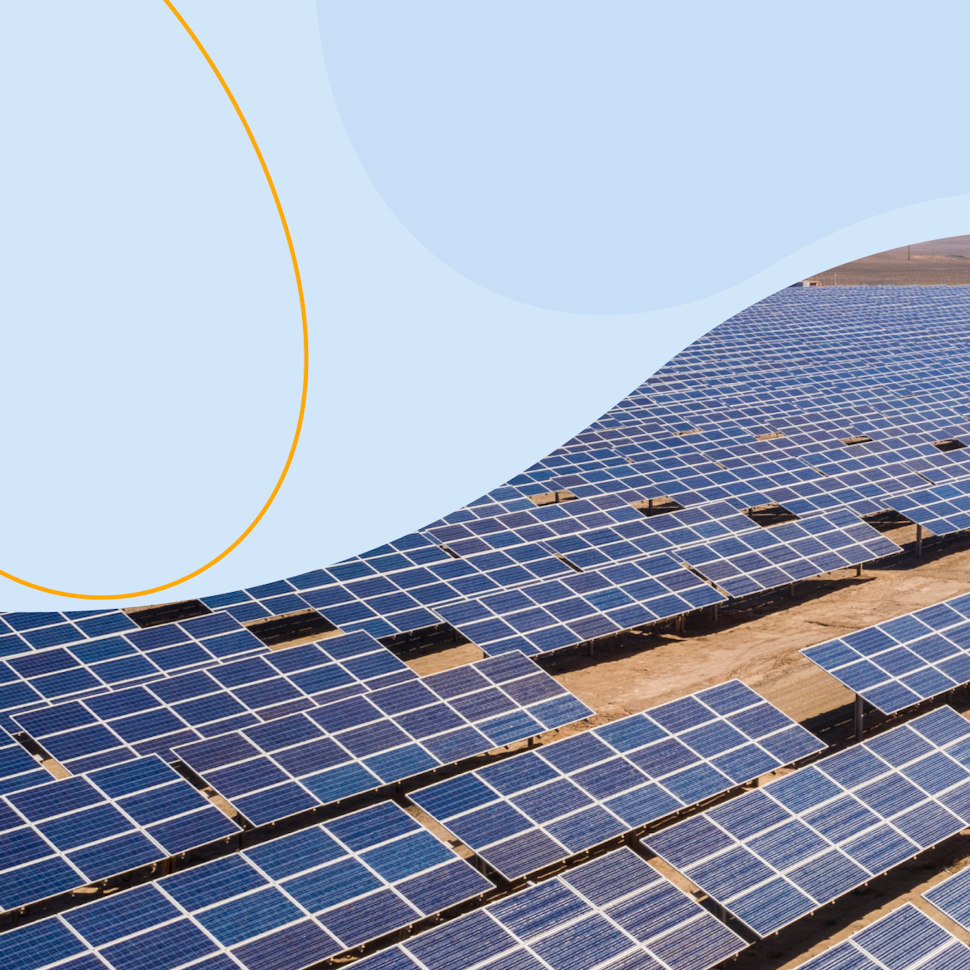- Solar energy blog
- Combatting load-shedding in the South Africa energy crisis
Combatting load-shedding in the South Africa energy crisis



Content
For years, South Africa has wrestled with an unstable energy grid. This has resulted in sporadic blackouts and a heavy dependence on fossil fuels. Coal, to be specific, fuels a significant 80% of South Africa's electricity production. However, things could be about to change.
To learn more about the key trends driving the renewable energy industry and what experts predict for the sector's future, download our Renewable Energy and Solar Research Report 2023.
Overseas investment in renewables and battery storage could be precisely what the nation needs to create a brighter, more sustainable future. Let’s now look at the intricacies of the South African energy grid and the promising solutions that might transform it.

Why is the grid so unstable?
South Africa’s energy grid has been on shaky ground for some time now due to a complex set of circumstances. Many facets have contributed to this, starting with Eskom, the state-owned enterprise responsible for the lion’s share of the nation’s electricity supply.
Eskom has suffered from underinvestment for years, and the consequences of this are far reaching. South Africa’s energy grid is not fit for purpose and has been straining under an ever-growing demand since 2007. This strain has led to frequent 'load-shedding' events, a term used to describe deliberate rolling blackouts designed to prevent the grid from collapsing.
These blackouts aren’t an occasional inconvenience. They’ve become a harsh reality of life in South Africa. They typically last for several hours and can occur multiple times a day. This was particularly felt in 2022, a record-breaking year with over 300 load-shedding events, three times the previous record set in 2020.
These power cuts are non-discriminatory. This means they affect both residential homes and commercial buildings. To counter this, many have turned to diesel generators as a stopgap measure. While these provide a somewhat consistent power supply, they also increase pollution.
The nation’s grid instability has not only impacted ordinary citizens but has also affected South African businesses significantly. Despite the ongoing energy crisis, South Africa has grown to be a regional data center hub.
This is due to its developed telecommunications infrastructure and the landing of 11 major subsea network cables. Like many others, these data centers heavily rely on diesel generators for backup power. This dependency has increased demand, supply shortages, and rising fuel costs.
Crime is yet another big part of the problem. Incidents of theft and industrial sabotage are common. Sometimes it’s profit-driven in the form of stealing cables and other infrastructure to sell, and other times it has political motivation.
Despite these issues, the primary culprits remain the aging and failing infrastructure. With generators in near-constant use due to blackouts, they wear out faster and require frequent repairs or replacements. But the domino effect doesn’t stop there. Fuel deliveries often get delayed due to the same blackouts, leading to even more grid instability. It’s a cyclical problem that feeds into itself, exacerbating the overall situation.
What can be done to ease the power crisis?
The one good thing about a crisis is that it presents an opportunity. With South Africa’s energy grid struggling, a collaborative international effort has emerged with a potential solution. The International Just Energy Transition (JET) Partnership, spearheaded by France, Germany, the UK, the US, and the EU, is an initiative with the primary objective of accelerating South Africa’s decarbonization efforts. Its focus is primarily on the electricity sector, aligning with the country’s updated emission goals.
With an initial commitment of $8.5 billion for the first phase of financing, the partnership aims to involve the private sector through grants, concessional loans, and investments. The outcomes are ambitious but achievable. Over the next 20 years, the partnership aims to prevent 1-1.5 gigatonnes of emissions and support the transition from coal reliance to a greener South African economy.
Decarbonization isn’t the only focus of this project. The partnership aims to balance ecological responsibility with societal care, ensuring that affected workers and vulnerable communities aren’t left behind during this transition. The goal is to create quality green jobs, sparking sustainable economic growth.
While the ongoing energy crisis costs South Africa’s economy an estimated $51 million daily, the government has also taken proactive measures. The implementation of an Energy Action Plan aims to secure a reliable electricity supply for the country.
Aiming to transition from the coal-fired power station to more green energy sources, the government has been welcoming private investments and collaboration with external stakeholders.
The Minister of Communications, Mondli Gungubele, has stated that the government is easing some energy project licensing requirements to expedite the approval of generation projects and invite more private investment.
Mr. Gungubele also highlighted recent progress, stating that agreements for 26 projects have been signed with independent power producers. Together these projects will produce about 2,800 MW of clean energy.
Could South Africa look to battery solutions to help with grid instability?
The simple answer to this question is yes. Battery solutions have the potential to be transformative for South Africa’s grid instability. While requiring substantial investment, they hold the potential to stabilize the grid while simultaneously reducing emissions.
Looking for guidance on the best way to size your BESS? RatedPower’s software includes functionality that automates and speeds up the feasibility study process for identifying viable utility-scale PV projects with BESS. Download the Guide now.
A recent report by the International Institute for Sustainable Development (IISD) underscored the critical need for South Africa to devise national and municipal energy storage strategies. In the face of an escalating power crisis and an increase in scheduled power cuts in the first half of 2023, energy storage solutions could balance electricity supply and demand, improve grid stability, and enhance financial returns for energy providers.
Battery energy storage systems (BESS) connected to the grid have also been earmarked as an immediate strategic priority. Given their rapid global growth and ability to offer multiple services quickly, they are integral to resolving the current power crisis.
The implementation of BESS alongside renewable energy sources could optimize grid efficiency and combat load-shedding. BESS could also lower the demand for coal supply from Eskom, offering much-needed flexibility to the country’s transmission system.
Not only could BESS prove a cost-effective alternative to grid expansion, but it could also broaden the power network’s reach to areas lacking grid infrastructure. It’s clear that South Africa should be looking at the benefits battery solutions could offer to help stabilize its current grid situation while making their energy mix more sustainable.
Are you planning your own solar power installation and looking to hybridize your PV power plant? Learn more about how RatedPower can design your BESS and optimize its capacity all in one place.
Listen back to our webinar: AC-coupled BESS: hybridizing your PV system to learn how solar developers can leverage AC-coupled BESS to engineer hybrid PV systems in RatedPower.
Latest stories
Related posts
Technology and engineering
Innovation in renewable energy: Developments expected in 2025
We look at the 10 biggest renewable industry developments that are making a green future possible, including perovskite solar cells, green hydrogen, and more.
Updated 18 MAR, 25

Technology and engineering
The era of standalone energy yield software is ending
Updated 19 APR, 22

Technology and engineering
How to battle soiling losses with RatedPower
How do soiling losses affect the output from a solar energy system and how can RatedPower help to account for them in a PV project?
Updated 22 FEB, 22

- RatedPower
- Solar energy blog
- Combatting load-shedding in the South Africa energy crisis



